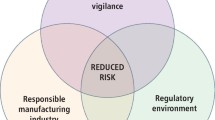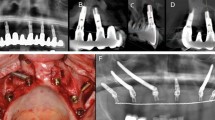Key Points
-
It is important to establish what is motivating the patient to seek treatment. There may be tangible or intangible reasons and the clinician needs to be clear what health gain is to be achieved.
-
The challenge revolves around balancing the autonomy of the patient's desire for cosmetic treatment with the downsides of intervention.
-
Consent is integral to ensure mutually satisfying treatment is provided.
Abstract
After the demise of the Industrial Age, we currently live in an 'Information Age'1 fuelled mainly by the Internet, with an ever-increasing medically and dentally literate population. The media has played its role by reporting scientific advances, as well as securitising medical and dental practices. Reality television such as 'Extreme makeovers' has also raised public awareness of body enhancements, with a greater number of people seeking such procedures. To satiate this growing demand, the dental industry has flourished by introducing novel cosmetic products such as bleaching kits, tooth coloured filling materials and a variety of dental ceramics. In addition, one only has to browse through a dental journal to notice innumerable courses and lectures on techniques for providing cosmetic dentistry. The incessant public interest, combined with unrelenting marketing by companies is gradually shifting the balance of dental care from a healing to an enhancement profession. The purpose of this article is to endeavour to answer questions such as, What is aesthetic or cosmetic dentistry? Why do patients seek cosmetic dentistry? Are enhancement procedures a part of dental practice? What, if any, ethical guidelines and constraints apply to elective enhancement procedures? What is the role of the dentist in providing or encouraging this type of 'therapy'? What treatment modalities are available for aesthetic dental treatment?
Similar content being viewed by others
Log in or create a free account to read this content
Gain free access to this article, as well as selected content from this journal and more on nature.com
or
References
Sheets C G . Modern dentistry and the esthetically aware patient. J Am Dent Assoc 1987; Spec No: 103E–105E.
Ahmad I . Protocols for predictable aesthetic dental restorations. Oxford: Blackwell Munksgaard, 2006.
Goldstein R E, Lancaster J S . Survey of patient attitudes towards current esthetic procedures. J Prosthet Dent 1984; 52: 775–780.
Ahmad I . A clinical guide to anterior dental aesethics. London: BDJ Books, 2005.
Sheets C G, Levinson N . Psychodynamic factors contributing to esthetic dental failures. Compendium 1993; 14: 1610–1620.
Welie J V M . Do you have a healthy smile? Med Health Care Philos 1999; 2: 169–180.
Jenson L . Restoration and enhancement: is cosmetic dentistry ethical? J Am Coll Dent 2005; 72(4): 48–53.
Chiodo G T, Tolle S W . Cosmetic treatment, autonomy, and risks: “if you don't do it, I'll go to a dentist who will”. Gen Dent 2001; 49: 16–22.
Hussey D L . Where is the ethics in aesthetic dentistry? Br Dent J 2002; 192: 356.
Ozar D T, Sokol D J . Dental ethics at chairside: professional principles and practical applications. 2nd ed. Washington DC: Georgetown University Press, 2002.
Mulcahy D F . Cosmetic dentistry: is it really health care? J Can Dent Assoc 2000; 66: 86–87.
Schanschieff S G, Shovelton D S, Toulmin J K . Report of the Committee of Inquiry into Unnecessary Dental Treatment. London: HMSO, 1986.
Pincus C L . Cosmetics – the psychologic fourth dimension in full mouth rehabilitation. Dent Clin North Am 1967; Mar: 71–88.
Ringel E W . The morality of cosmetic surgery for aging. Arch Dermatol 1998; 134: 427–431.
Ward D H . Proportional smile design using the recurring esthetic (RED) proportion. Dent Clin North Am 2001; 45: 143–154.
Hartshorne J, Hasegawa T K Jr. Overservicing in dental practice – ethical perspectives. SADJ 2003; 58: 364–369.
Glick K . Cosmetic dentistry is still dentistry. J Can Dent Assoc 2000; 66: 88–89.
Kelleher M . Makeover myths from the “Land of the Fee”. Oral presentation given at the British Dental Association Conference and Exhibition 2007. 24-26 May 2007, Harrogate, UK.
Besford J . Western approaches: corrosive perfectionism from North America. Oral presentation given at the British Dental Association Conference and Exhibition 2007. 24-26 May 2007, Harrogate, UK.
Chambers D W . Quackery and fraud: understanding the ethical issues and responding. J Am Coll Dent 2003; 70: 9–17.
Ahmad I . Digital and conventional dental photography: a practical clinical manual. Chicago: Quintessence Publishing Co, 2004.
Author information
Authors and Affiliations
Corresponding author
Additional information
Refereed paper
Rights and permissions
About this article
Cite this article
Ahmad, I. Risk management in clinical practice. Part 5. Ethical considerations for dental enhancement procedures. Br Dent J 209, 207–214 (2010). https://doi.org/10.1038/sj.bdj.2010.769
Accepted:
Published:
Issue date:
DOI: https://doi.org/10.1038/sj.bdj.2010.769
This article is cited by
-
Why simple aesthetic dental treatment in general practice does not make all patients happy
British Dental Journal (2014)



